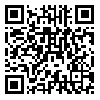BibTeX | RIS | EndNote | Medlars | ProCite | Reference Manager | RefWorks
Send citation to:
URL: http://bcn.iums.ac.ir/article-1-34-en.html
2- Medical School, Iran University of Medical Sciences
3- Medical School, Iran University of Medical Sciences, Department of Speech Therapy, University of Social Welfare and Rehabilitation Sciences
A B S T R A C T
Introduction: In an oddball experiment, the context in which novel stimuli are presented affects characteristics of novelty P3, i.e. as long as there is a difficult task in which the difference between standard and target stimuli is small, recurrent presentation of a highly discrepant stimulus can lead to P300 highly similar to novelty P3. Effect of stimulus properties on P300 has also been previously examined and it has been shown that it plays a significant role in P300 topography, its amplitude and latency.Here we have examined the effect of surface color of objects of high color-diagnosticity in a visual oddball paradigm.
Methods: In two separate conditions, we used pictures of fruits as target and novel stimuli. In condition one, novel stimuli were pictures of fruits in their canonical colors. In the second condition, novel stimuli were the same photo filtered to have a different non-canonical color. P300 was compared among these conditions.
Results: Both target P3 and novelty P3 were detected in the two conditions but no significant difference was evident between conditions.
Discussion: This result suggests that comparing to shape information color cue does not play a significant role in detecting context novelty.
Received: 2010/02/18 | Published: 2010/05/15
| Rights and permissions | |
 |
This work is licensed under a Creative Commons Attribution-NonCommercial 4.0 International License. |





